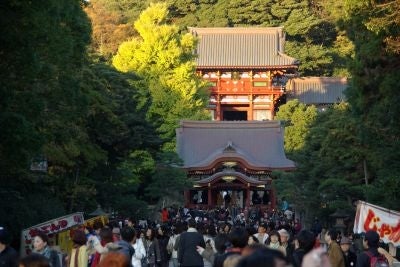One of the most famous shinto shrines in Japan will be marking the arrival of summer on May 5 with an annual ritual to ward off evil and purify the body as well as a performance of ancient court music and dancing.
Tsurugaoka Hachiman-gu can trace its history back to 1063 and stands at the end of a long avenue of cherry trees in the ancient capital of Kamakura, about 30 km southwest of Tokyo. The shrine - which was originally a Buddhist temple - includes some excellent examples of traditional Japanese religious architecture, including a large "torii" entrance gate, arched bridges, carp ponds, a stage for performances of "bugaku" dance and the "hongu" senior shrine, at the top of a steep flight of steps.
According to ancient tradition, Japan celebrates May 5 as " Shobu-no-sekku," or the festival of the iris, marking the change between spring and summer, and festivals held at shrines around the country are designed to expel malign spirits and to prevent against illness.
The date is also a national holiday in Japan, celebrating Children's Day.
" Shobu-no-sekku" was first celebrated at Tsurugaoka Hachiman-gu in 1187, according to Takamichi Yanagita, a spokesman for the shrine, and is based on the ancient belief that the iris wards off evil and its special powers are invoked before the full heat of the summer arrives.
Elderly local residents take part in the ceremony, with people aged 80 or older receiving a walking stick and wooden amulet, while anyone over 90 is given a red cushion.
Before the presentation ceremony, which takes place around 3 pm, there will be a performance of "bugaku" dance, accompanied by classical music involving traditional oboes, flutes and lutes.
The dance program will start with a ritual cleansing of the stage with prayers and dancers armed with halberds, followed by three forms of dance.
May 5, 2010
Times: " Bugaku" dance performance starts at 1 pm and the " Shobu-no-sekku," festival of the iris, is from 3 pm.
Access: The Tsurugaoka Hachiman-gu Shrine is a 10-minute walk from Kamakura Station.
Address: Hachiman-gu Shrine, 2-1-31 Yukinoshita, Kamakura City, Kanagawa Prefecture 248-8588.
Further information: +81 467 22 0315 or from the shrine website at www.hachimangu.or.jp
JR

Join our commenting forum
Join thought-provoking conversations, follow other Independent readers and see their replies
Comments